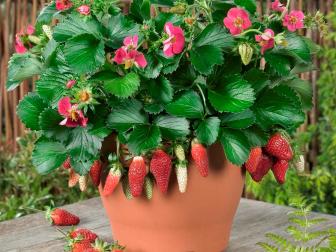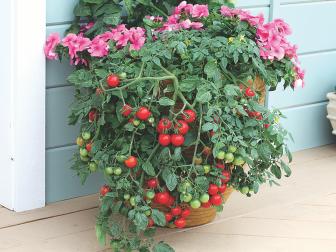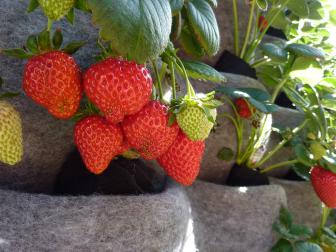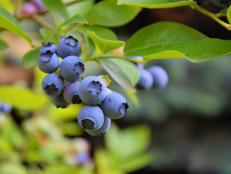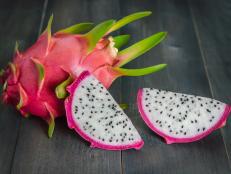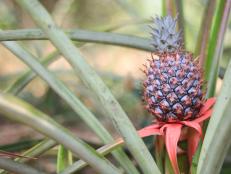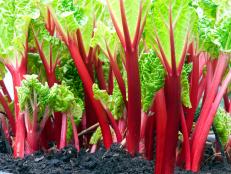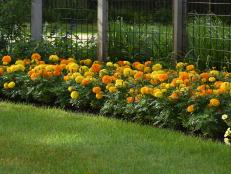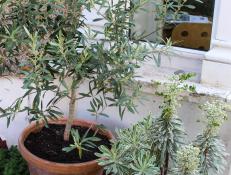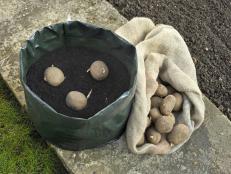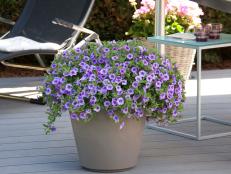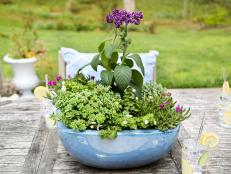How to Grow Strawberries in Pots
Learn how to easily grow juicy strawberries in containers for a delicious harvest.
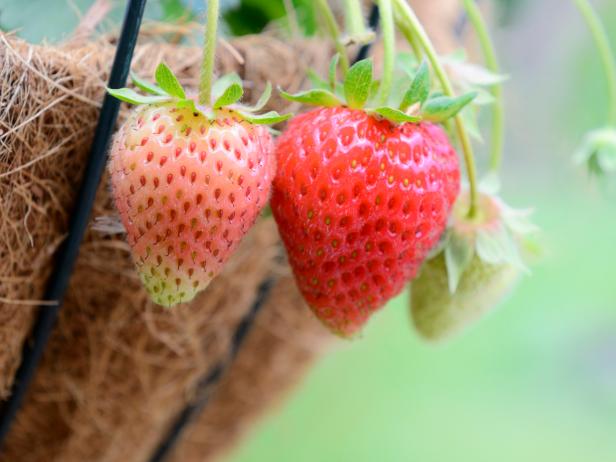
CreativeI
Juicy strawberries grow here in a coconut-lined hanging basket. Find out how to plant your own below.

If your space is limited or you simply have a hankering to grow something unusual, then growing strawberries in containers may be just the thing for you. These eight steps will lead you to success in harvesting these irresistible berries.
1. Choose the right pot. Because strawberry plants are small and have shallow roots, containers can be as little as eight to 12 inches wide and not very deep. Bear in mind that small containers dry out quickly, so planting several strawberry plants in a larger container makes for easier care. Space the plants 10 to 12 inches apart.
Light-colored synthetic pots work well. The light color will help keep strawberry roots cool and synthetic materials, such as plastic, retain moisture better than clay. Strawberry jars, which are vase-shaped pots with pockets for plants, may seem like a natural choice, but these require special planting techniques that incorporate irrigation, and yields can be disappointing. Hanging planters and pots are other choices as well as a DIY. One idea is to attach a cloth shoe organizer, one with many pockets, against a wall for a vertical growing surface. Add small holes at the bottom of each pocket for water to escape. Whatever pot you use, good drainage is essential.
2. Select the type of strawberry that matches your interest. There are three main types of cultivars. If the plants you are considering do not indicate the type, research it online or ask for assistance.
- June-bearing strawberries produce a flush of fruit in spring, but only once during the growing season. These can provide the most abundant harvest.
- Everbearing tend to produce berries in two to three flushes across the summer months, offering a lengthier growing season to enjoy the tasty fruit.
- Day-neutral is a newer form of everbearing. Day-neutral plants will steadily produce fruit when temperatures remain between 35 and 85 degrees. In mild areas, the plants can continue to produce well into fall. Day-neutral strawberries can cease flowering when temperatures rise above 85. So, this type is not a good choice in regions with extremely hot summers.
3. Use a loose, well-draining soil. You want a soil that retains moisture but does not become soggy.
4. Select the right spot. Sun-loving strawberries do best in six or more hours of direct sun a day. In areas of the US with the highest heat, a plant may appreciate some light shade across the day. If your area is dry, misting around the pots also can help the plants contend with heat. Rotate the pot every two to three days for even exposure.
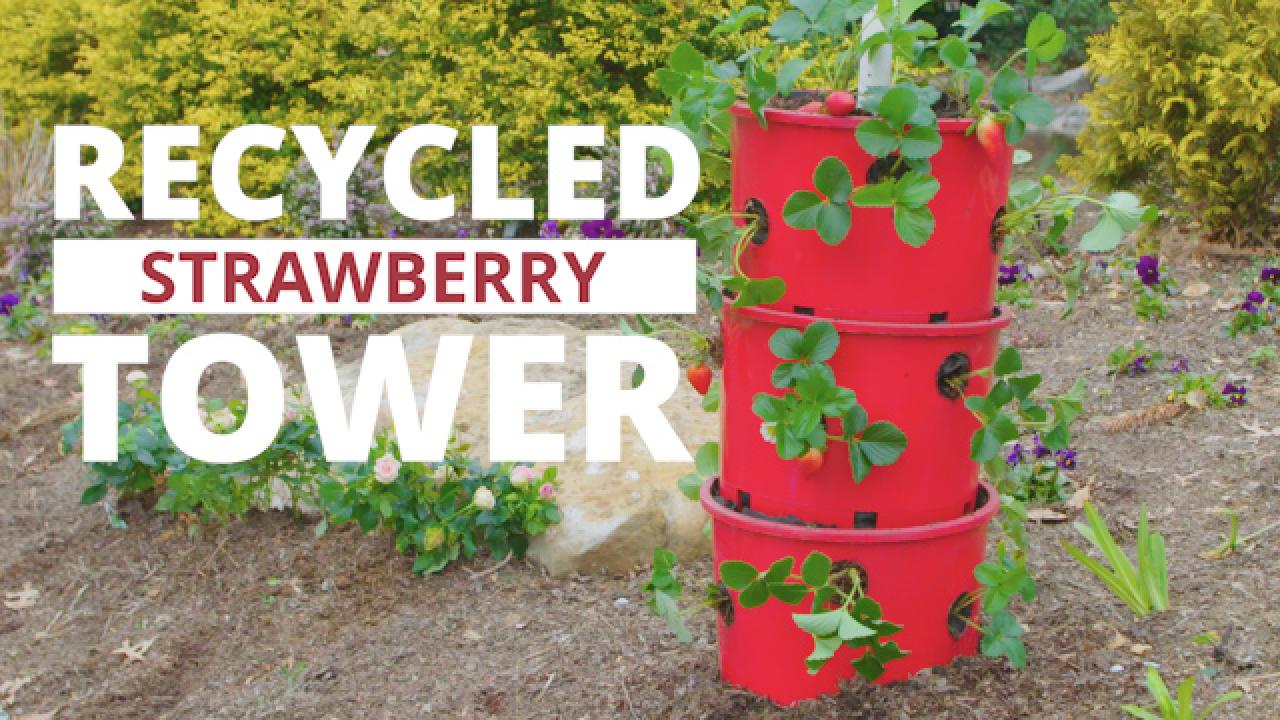
5. Water with care. The goal is to prevent the plant from drying out but also to avoid sodden soil, which can cause rot. Since strawberry roots are shallow, you do not need to water a deep pot until water runs out its bottom. At the peak of summer, a lighter watering twice a day may work best. Direct water under the plant’s leaves and avoid allowing water to stand on the leaves. Water early in the day or later in the afternoon with sufficient time for the water to soak in and dry off the plant before sundown.
6. Fertilize regularly. Feed every other week with a liquid fertilizer high in potassium to boost fruit production or with a balanced 10-10-10 or its organic equivalent for overall plant health. Brush granules off the leaves after the application.
7. Protect from disease. When fruits begin to develop, gently elevate them from the ground by tucking straw or wood chips underneath. This lowers the risk of disease.
8. Decide between annual or perennial. Growing strawberry plants in containers as annuals is the most carefree way to enjoy them. Simply remove the plants after fruiting or at the end of summer and look forward to starting fresh in the new year. If you prefer to keep your plants going a season or two longer, then continue to fertilize after harvest. Snip off any runners that appear, to concentrate energy in developing the plant, and trim plants back to the center, young leaves at the crown. If your winters are mild, you may be able to shelter the plants in place by mulching well with straw or sawdust. Placing the pots close to the exterior of a house can create a warmer climate. In colder areas, either dig the pot into the soil or overwinter plants in an unheated garage. Plants also can be grown under plastic row cover. Water only enough so the plant does not dry out. The plus of the extra care needed to sustain them across winter is that strawberry plants produce more fruit their second year, so a delightful harvest lies ahead.
Get Growing
Popular Strawberries to Grow 7 Photos
Growing strawberries? Try these sweet varieties.
Easiest Vegetables to Grow in Flower Pots 9 Photos
Discover the easiest crops to grow in flower pots.
Creative Strawberry Planters 22 Photos
Learn about different types of stylish containers you can use for growing strawberries.






